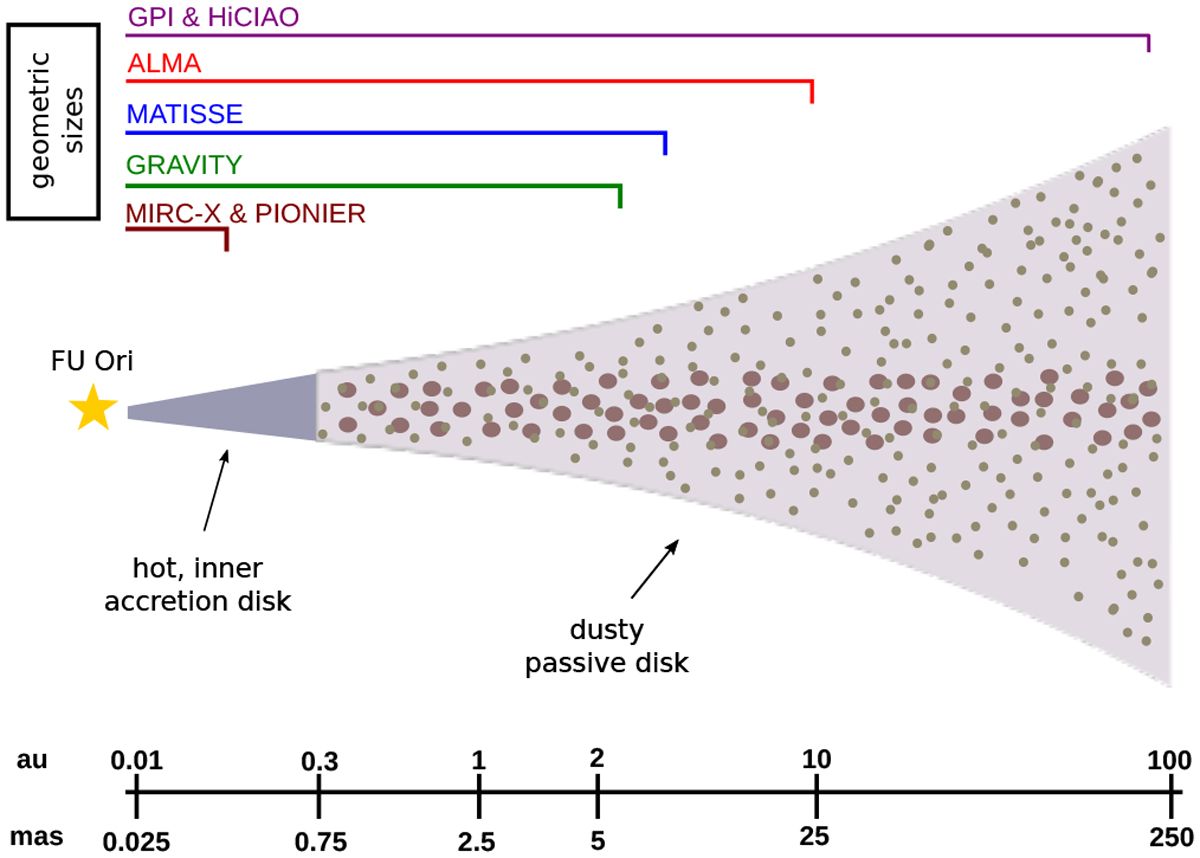Fig. 7

Download original image
Rudimentary sketch of the FU Orionis accretion disk, indicating the inner, hot region (dark gray area; component (1)) and the dusty, passive disk (light gray area; component (2)), which at 0.3 au are separated. In this work, we presume that the inner disk is optically thick and devoid of dust, although it could be surrounded by a halo of gaseous material. The dusty disk is flared, with the bulk of large grains settling in the mid-plane. We roughly indicate the extent of the regions (geometric sizes and/or direct images) that have been detected by MATISSE and by other high-angular-resolution instruments, such as MIRC-X and the Precision Integrated-Optics Near-infrared Imaging ExpeRiment (PIONIER) (H), GRAVITY (K), ALMA (1.3 mm continuum), and the GPI and High-Contrast Coronographic Imager for Adaptive Optics (HiCIAO) (scattered light; J, H). The physical scales are given here in astronomical units, and they are converted to angular sizes, with the Gaia EDR3 distance to FU Ori adopted. Other than that, this drawing is not to scale.
Current usage metrics show cumulative count of Article Views (full-text article views including HTML views, PDF and ePub downloads, according to the available data) and Abstracts Views on Vision4Press platform.
Data correspond to usage on the plateform after 2015. The current usage metrics is available 48-96 hours after online publication and is updated daily on week days.
Initial download of the metrics may take a while.


